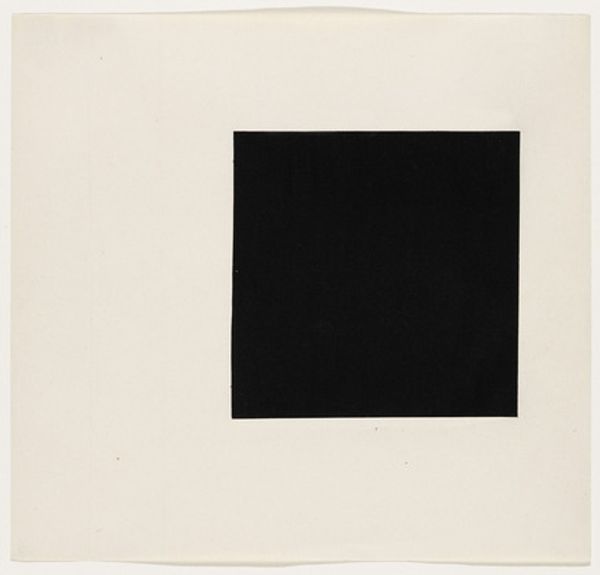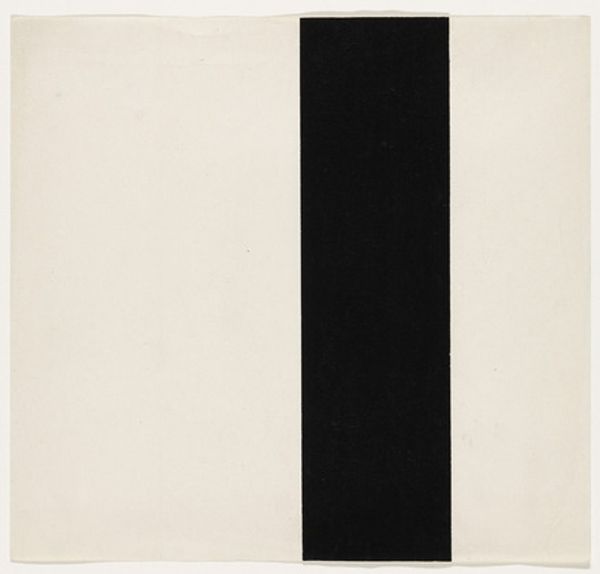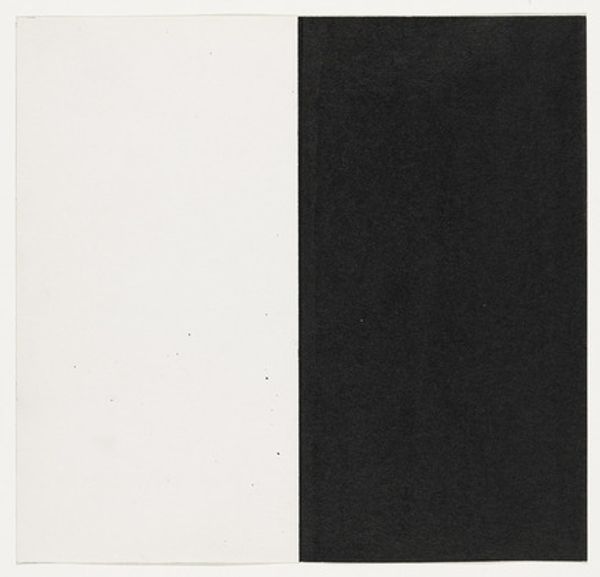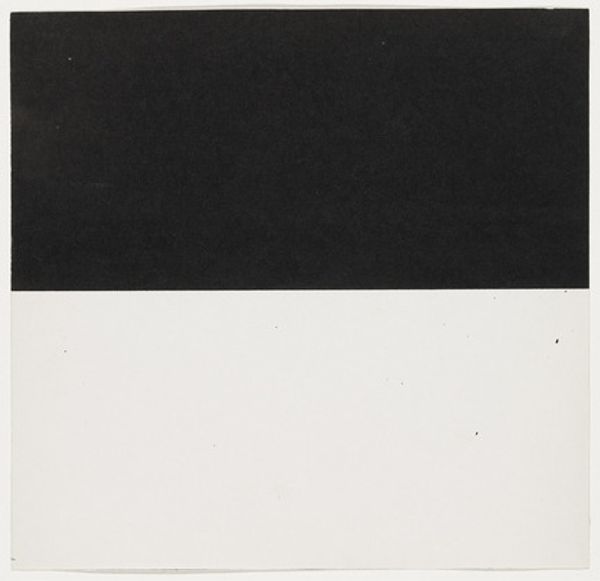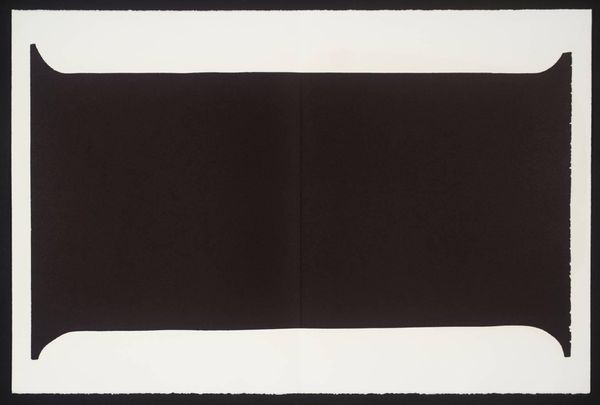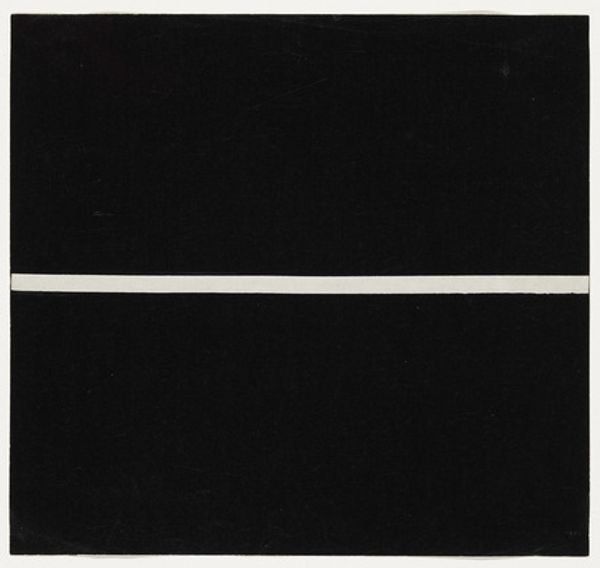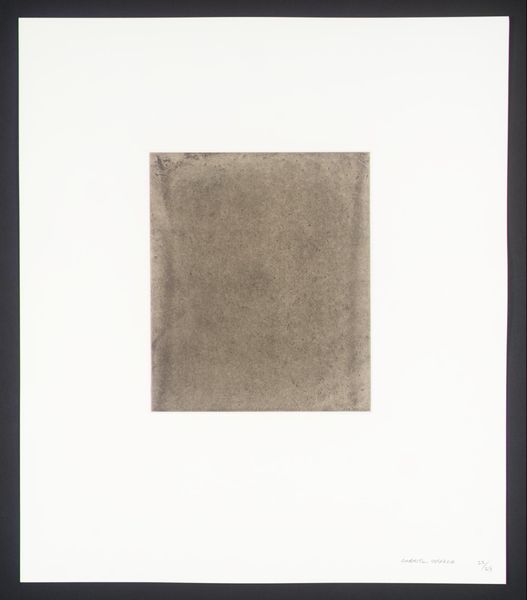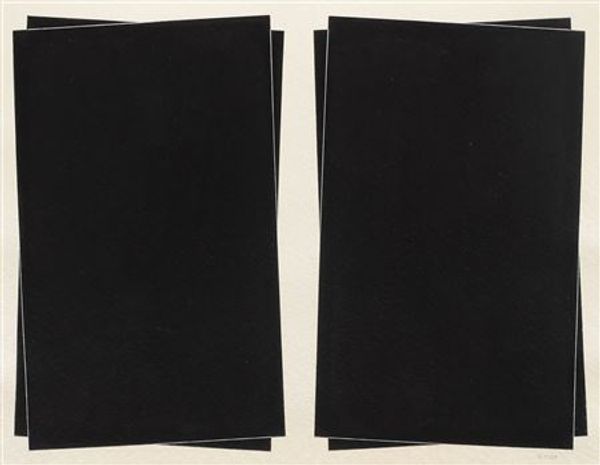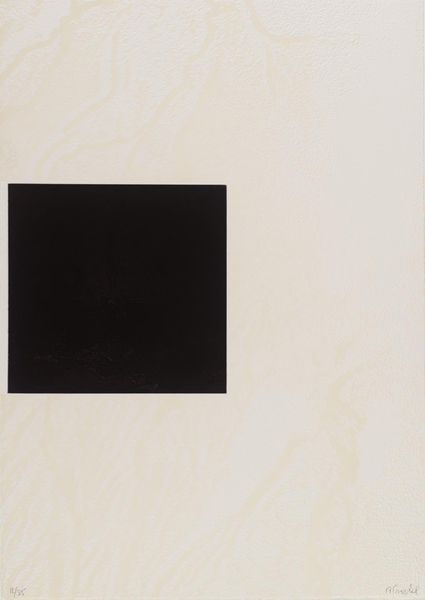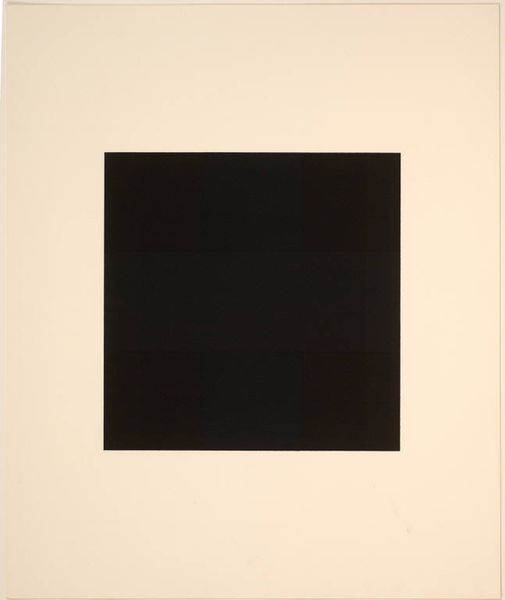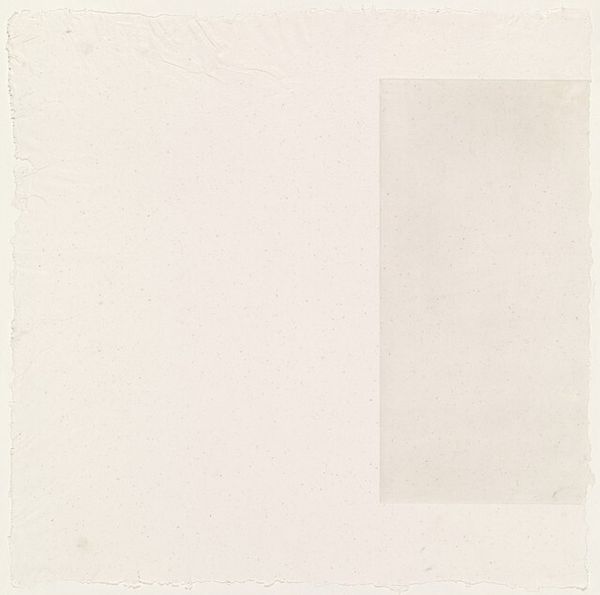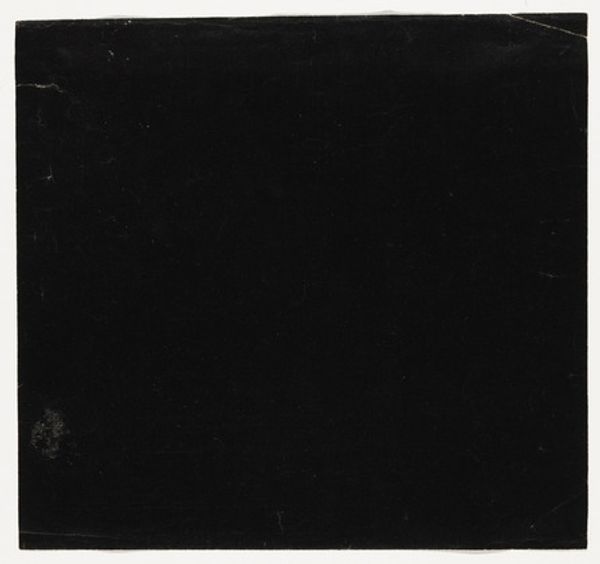
painting
#
painting
#
minimalism
#
colour-field-painting
#
form
#
rectangle
#
geometric
#
abstraction
#
line
#
modernism
#
hard-edge-painting
Copyright: (c) Ellsworth Kelly, all rights reserved
Editor: Here we have Ellsworth Kelly’s "Rectangle from the series Line Form Color," created in 1951. It’s a painting, primarily black and white. It’s striking how such a simple composition can feel so bold. What stands out to you about it? Curator: The power of this piece resides precisely in its economy of form and color. The relationship between the black and white is not merely contrast, but a structural interplay. Notice how the negative space, defined by the black, becomes just as significant as the white rectangle itself. It challenges our perception. Editor: I see what you mean. It’s like the black is pushing the white rectangle forward. It creates depth in an otherwise flat plane. What do you make of the title, "Line Form Color?" Curator: The title serves as a key, directing us to the fundamental elements Kelly explores. The "line" is the defining edge, creating "form"—the rectangle—and modulating "color." Do you think the painting is successful in its project? Editor: Absolutely. I find myself contemplating the subtle variations in the black paint, how it absorbs light differently in various areas, giving a surprising texture to an ostensibly flat area. It makes me consider the weight and mass of the shapes. Curator: Precisely. It's a testament to Kelly's rigorous investigation of pure visual form, stripped bare of extraneous detail. This work epitomizes hard-edge painting. A reduction to pure experience. Editor: This piece initially felt simplistic but I see the refined and intellectual game with forms. It demonstrates the possibility of something significant with an approach stripped to basics. Curator: Agreed, my appreciation also evolved upon analyzing how Kelly employed a dialogue between solid form and surface values.
Comments
No comments
Be the first to comment and join the conversation on the ultimate creative platform.
